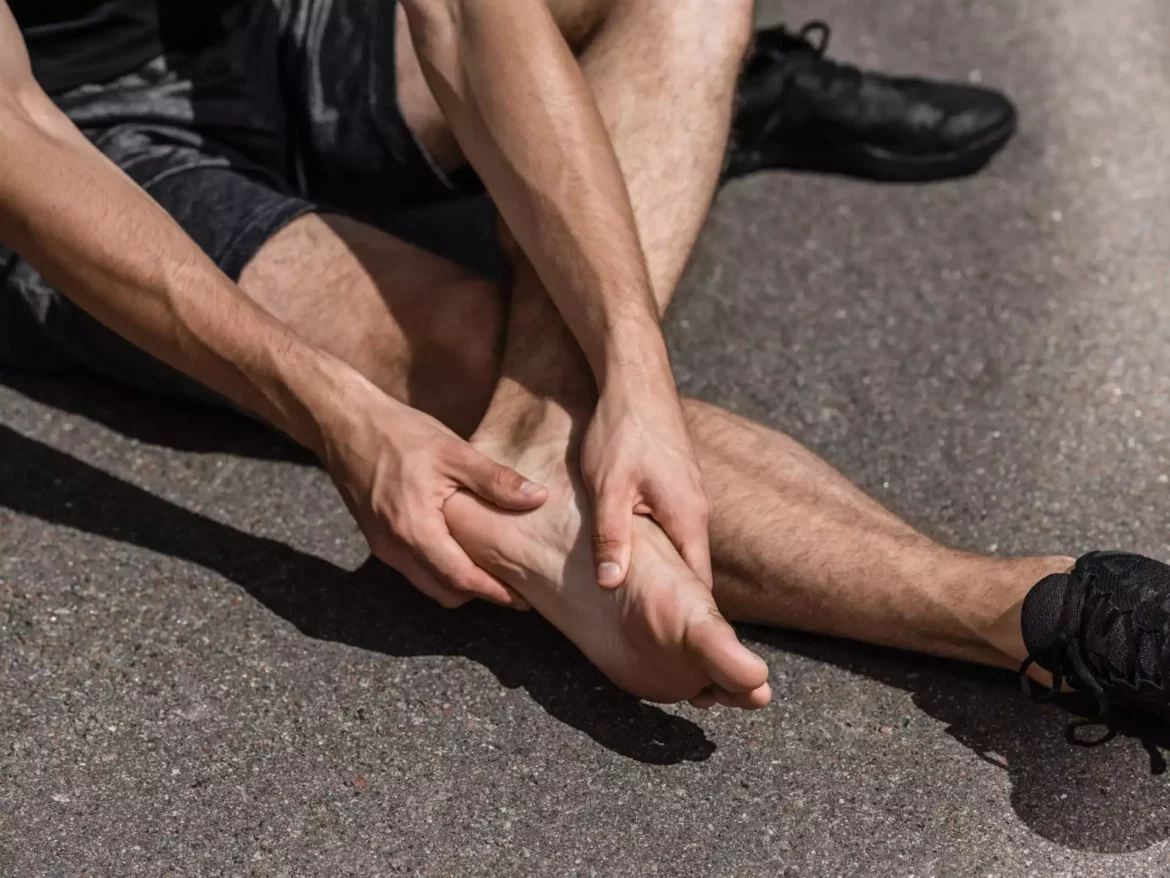Plantar fasciopathy, or commonly called fasciitis, is an injury that affects the plantar fascia, a semi-elastic band that runs from the calcaneus (heel bone) to the base of the toes and can keep us away from the courts for a while. In the vast majority of cases, this injury is located at the insertion of the fascia, that is, at the point where the fascia joins the calcaneus. The pain is usually more or less intense, especially during the first few steps after periods of rest.
Although it has commonly been pigeonholed as an inflammatory lesion (hence the term fasciitis to which we will refer in this article), the most recent studies show that it is a degenerative lesion, i.e. there is tissue destruction, alteration of the orientation of the fibres and thickening of the size of the fascia, which is why the appropriate terminology to define it would be “fasciopathy” even though it is accompanied by tissue inflammation.
What is the plantar fascia and what are its functions?
The plantar fascia is a semi-elastic band, similar in appearance and behaviour to a tendon.
The plantar fascia is a fundamental pillar in the biomechanics of the foot and our body in general, not only for its function of providing support to the arch of the foot, but also for its great work in the absorption and release of elastic energy when we carry out any physical activity, from walking to running or jumping. In this way, the fascia plays a very important role in padel, where due to the characteristics of the game, the fascia will have the function of absorbing the energy generated in all movements and actions and releasing it in a way that gives us greater efficiency, avoiding for example an overwork of the calf muscles.
What are the causes of plantar fasciitis?
As in the vast majority of injuries, the cause is usually multifactorial, i.e. the origin of the injury is due to a sum of risk factors that at a certain moment produce the injury.
Plantar fasciitis, like tendinopathies, are categorised as overuse injuries, i.e. injuries that occur due to high repetition of a situation that is causing stress or fatigue to the structure.
The main risk factors for plantar fasciopathy are:
- Pronator gait
- Contracture of the inner calf and/or soleus
- Change of footwear
- Inadequate footwear
- High body mass index
- Weakness of the foot musculature
- Intensity and time of training
- Lack of physical preparation
- Playing surface or pitch
Why is plantar fasciitis the second most common injury in padel?
According to some studies, plantar fasciopathy is the second most common cause of injury among padel players, after epicondylitis.
Due to the high intensity of the movements and gestures performed in paddle tennis (lateral movements, accelerations, braking, jumps and landings) together with the increased support on the front part of the foot during almost all these gestures, the fascia is subjected to continuous mechanical stress, i.e. it suffers a very high stress..
In addition, it has been seen that Split step increases the activation of the inner calf and soleus which can end up generating fatigue in this musculature or overloading it. Overloading the calf muscles or increasing their tension translates into an increase in tension in the plantar fascia, so that the stress on this is also increased..
How to prevent the onset of plantar fasciitis?
It is virtually impossible to prevent an injury 100%, but we can reduce the risk or likelihood of it occurring. How can we try to prevent it?
First of all, it is of great importance to know what factors we have that can cause plantar fasciitis, which is why it is advisable to have a biomechanical study of the footprint in a specialised centre. The biomechanical study of the footprint will help us to detect and understand how our feet behave and how they influence the functioning of our locomotor system.
Once we have detected the possible factors that may favour the appearance of plantar fasciitis, we will try to solve them with:
- Correct physical preparation to solve those deficiencies in our structures that may influence the appearance of the injury.
- The use of customised insoles to modify footprint patterns that may favour the appearance of fasciitis during our sports practice.
- Correct technique in movements and actions that will help us to be more efficient on the court.
- Footwear suited to our characteristics and the type of carpet on which we play.
- Stretching and relaxing the calf and soleus muscles with a foam-roller after our matches or training sessions.
- Massage the sole of the foot with a ball after playing.
- See a physiotherapist to treat those mobility deficits or overloads that may influence the appearance of the injury.
What is the treatment for plantar fasciitis?
In early stages, it is recommended:
- Physiotherapy. Plantillas a medida. In addition, if the cause is a contracture of the calf or soleus, it will be essential to reduce the contracture in order to reduce the pain of the fascia and the tension of the fascia.
- Custom-made insoles. Son una buena estrategia para combinar con la fisioterapia, enfocadas a disminuir el estrés tensil que soporta la fascia durante nuestros partidos o entrenamientos que es la causa de la degeneración de la misma y la aparición de la lesión. In addition, they will be of great importance at a preventive level in the future.
- Work on the intrinsic musculature of the foot. El pie cuenta con musculatura que posee la función de aportar estabilidad y absorber energía. If there is a lack of its function or a weakness of this musculature, it will be other structures such as the fascia that will take over this function in an excessive way.
- Footwear. If the cause can be associated with incorrect footwear, it will be advisable to analyse it and change it if necessary.
In more advanced stages, more invasive treatments can be used, such as the application of Platelet Rich Plasma (PRP) or even surgery as a last therapeutic option.


